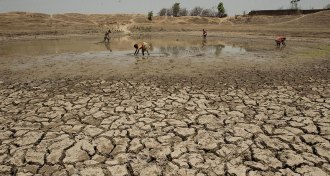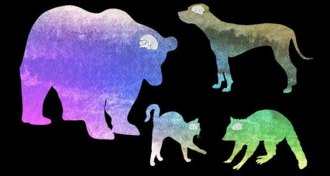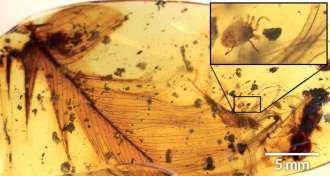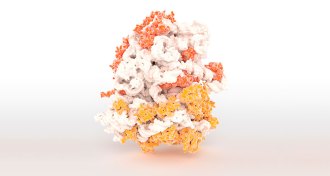News
-
 Astronomy
AstronomyAI has found an 8-planet system like ours in Kepler data
An AI spotted an eighth planet circling a distant star, unseating the solar system as the sole record-holder for most known planets.
-
 Climate
ClimateThese weather events turned extreme thanks to human-driven climate change
Ruling out natural variability, scientists say several of 2016’s extreme weather events wouldn’t have happened without human-caused climate change.
-
 Planetary Science
Planetary ScienceSaturn’s rings are surprisingly young and may be from shredded moons
Final data from the Cassini spacecraft put a date and a mass on the gas giant’s iconic rings.
-
 Science & Society
Science & SocietyU.S. religion is increasingly polarized
Organized religion in the United States increasingly belongs to fervent believers, a new study finds.
By Bruce Bower -
 Neuroscience
NeuroscienceIn a tally of nerve cells in the outer wrinkles of the brain, a dog wins
Among some carnivores, golden retrievers rate at the top for numbers of nerve cells, study finds.
-
 Health & Medicine
Health & MedicineFracking linked to low birth weight in Pennsylvania babies
Babies born to moms living within one kilometer of a hydraulic fracturing site were more likely to be born underweight, researchers say.
-
 Tech
TechElectric eels provide a zap of inspiration for a new kind of power source
Battery-like devices inspired by electric eels could someday power wearable and implantable tech or soft robots.
-
 Planetary Science
Planetary ScienceJupiter’s massive Great Red Spot is at least 350 kilometers deep
NASA’s Juno spacecraft has measured the depth of Jupiter’s Great Red Spot for the first time.
-
 Animals
AnimalsTicks had a taste for dinosaur blood
A tick found trapped in amber is evidence the bloodsuckers preyed on feathered dinosaurs, a new study says.
-
 Life
LifeNot all of a cell’s protein-making machines do the same job
Ribosomes may switch up their components to specialize in building proteins.
-
 Astronomy
AstronomyMost complete map of Titan reveals connected seas and cookie-cutter lakes
The latest map of Titan, based on all the data from the Cassini spacecraft, displays new details about the moon’s lakes and seas.
-
 Physics
PhysicsSome high-temperature superconductors might not be so odd after all
Unusual high-temperature superconductors might be explained by standard superconductivity theory.